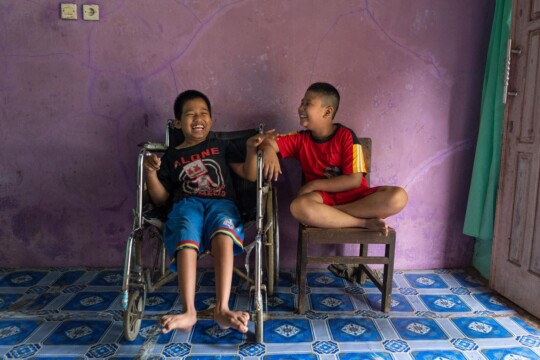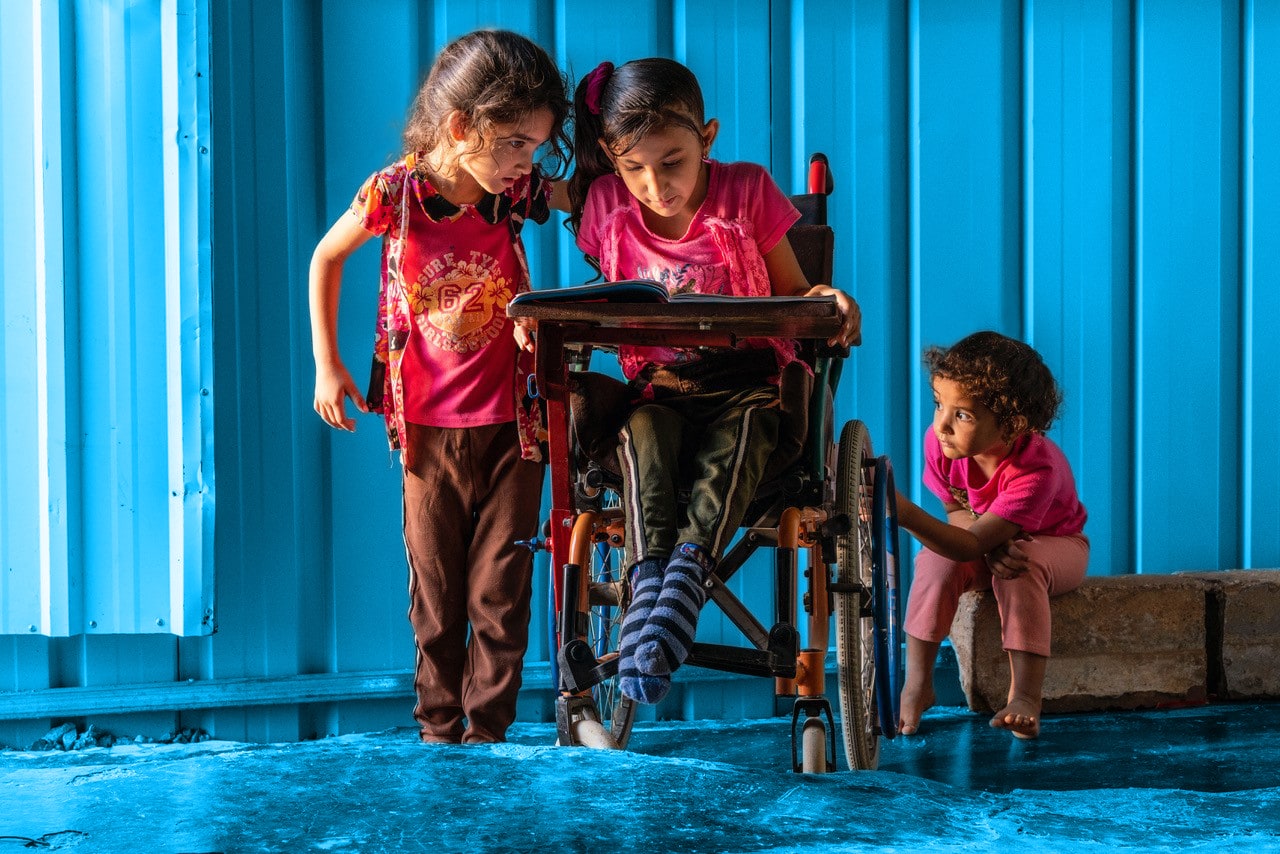A new way to measure child functioning
To address the paucity of data on the situation of children with disabilities globally, UNICEF and the Washington Group on Disability Statistics developed the Child Functioning Module for use in censuses and surveys. The module is intended to provide a population-level estimate of the number and proportion of children with functional difficulties. It conforms to the biopsychosocial model of disability, focusing on the presence and extent of functional difficulties rather than on body structure or conditions.
The Child Functioning Module is comprised of two questionnaires, one with 16 questions for children aged 2 to 4 years and another with 24 questions for children aged 5 to 17 years. The questions are to be administered to the mother or primary caregiver of the child in question. They are designed to identify difficulties according to a range of severity. To better reflect the degree of functional difficulty, each area is assessed against a rating scale.
The Child Functioning Module was developed in consultation with organizations of persons with disabilities, among other stakeholder groups. These organizations were instrumental in the design of the module, including through their engagement during its validation in the field. The module underwent extensive review by other experts and was tested in several countries to determine the quality of questions and how well they are understood by people in diverse cultures.
In March 2017, a joint statement issued by multiple UN agencies and Member States, organizations of persons with disabilities and other stakeholders recommended the module as the appropriate tool for SDG data disaggregation for children. The development of the Child Functioning Module and its roll-out as part of the Multiple Indicator Cluster Survey (MICS) has led to the release, for the first time, of crossnationally comparable data on children with disabilities. In addition, many countries have also included the module as part of their nationally representative surveys. Estimates from around 50 countries have been released as of November 2021, and data from 20 more surveys are expected to become available over the next couple of years.
Resources



